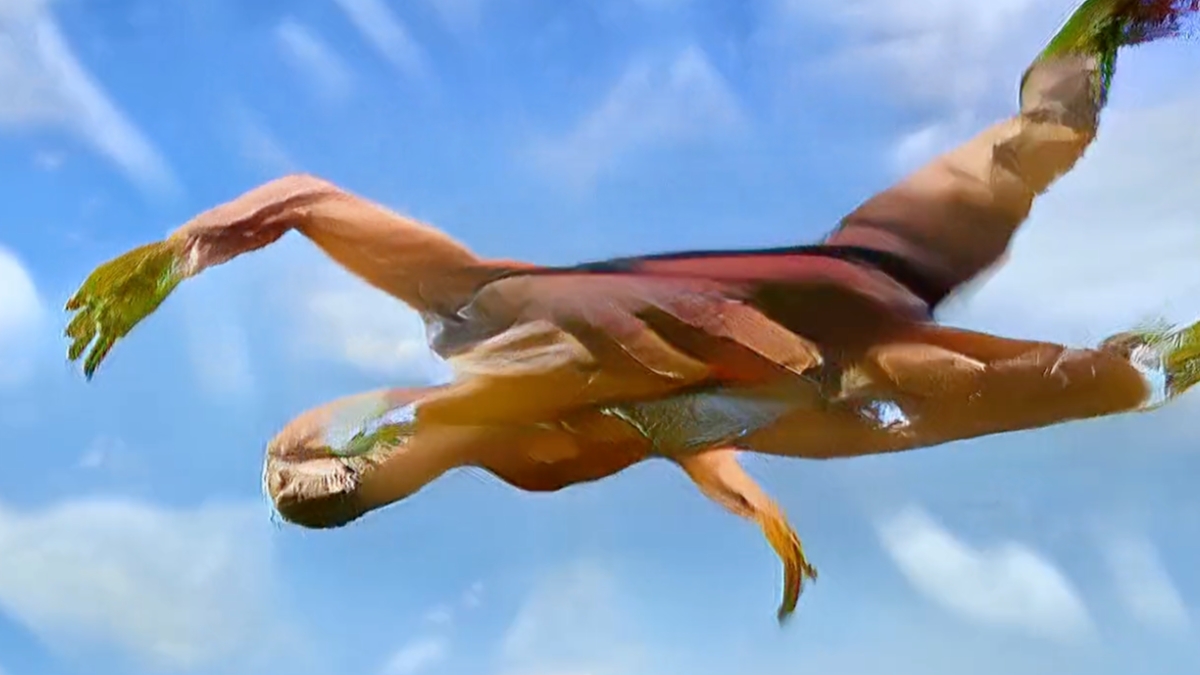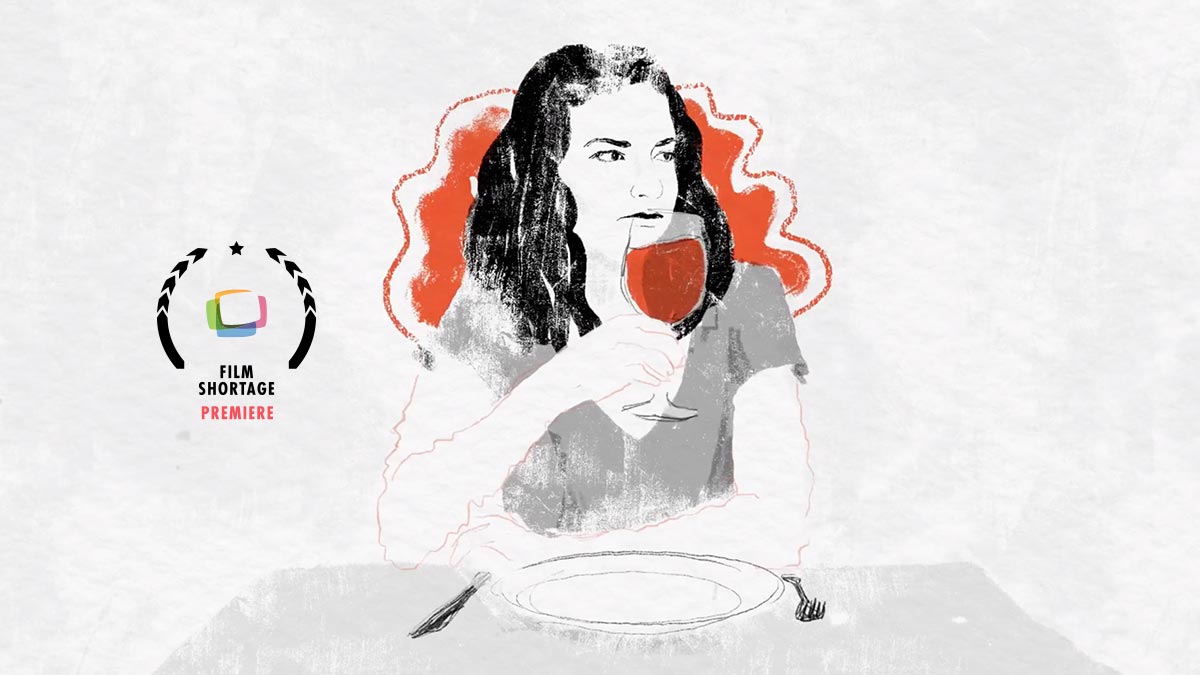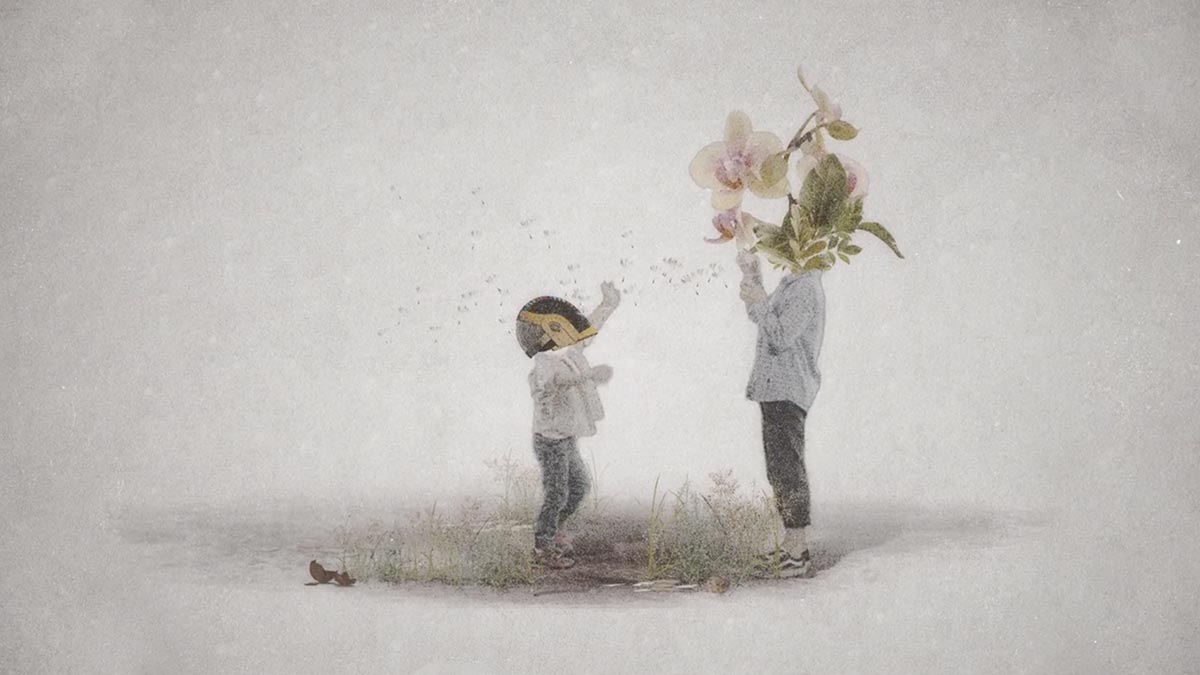Martha has stopped listening to her gut and her life is suffering. But when a strange encounter forces her to see things a little differently, Martha must embrace the irrational and embark on a surreal journey, learning to trust her gut instinct once again.
Some films just have the capacity to completely take you in. ‘Your Mountain Is Waiting’ doesn’t even give you a chance to think about escaping as it swiftly sets the intrigue with its pastel-toned animated style. The story itself is resonating and familiar as we follow a young girl seemingly feeling trapped in the city life. The strange encounter that follows opens the door to a magnificent and surreal journey, which is as pleasant to watch as it is to hear. The film is written and animated by Harriet Gillian and directed by Hannah Jacobs, we spoke with the latter who gave us much more detail on the film itself.

Can you tell me a little bit about Your Mountain is Waiting, how did this film come about?
The theme of intuition and trusting your gut was a topic that Harriet and I had both been reflecting on when we decided to make the film. We had actually only met 6 months prior to getting ideas together, but we instantly hit it off, sharing life experiences over countless cups of tea. And it was perfect timing because at the same time the BFI opened applications for their Short Form Animation Fund – their first big fund specifically targeted at animated shorts.
When Harriet and I were initially applying, we hadn’t worked together in the capacity of director and writer, in fact working so closely with a writer to develop a shared idea was an entirely new approach for me. Luckily it turned out that we had a very organic way of collaborating, exchanging notes and ideas back and forth and we were very much in sync. It really started with me throwing this VERY vague collection of thoughts at her. I would say even calling it an idea would be giving it too much. And she just totally got it, and ran with it and every few days came back to me with this epic and beautifully crafted script. It really was a visual banquet and it made my job very easy in terms of sketching things out and developing the world visually.
That collaborative element of working has always been my favoured approach to making work, and this was truly that from that first meet up to delivering the final film. Having Harriet as the lead animator and writer was so helpful to the process, she really played a huge hand in helping me to realise particular scenes and develop the storyboard.
The film has an incredibly calming tone, how did you manage the tempo and pace throughout?
The aesthetic was definitely a large part of this. I was really keen to try and make a film that totally embraced how I approach illustration, using lots of luscious textures and colour, and having the freedom to really push that. A lot of the time working on commercial jobs means you either have to tweak your style to fit a brief, or else adopt a simplified approach to work within time and budget restrictions. Which I’m not knocking as sometimes having those restrictions can push you in more varied and interesting directions. But for that particular moment in my career, I was curious to try and make a film that fully leant into my illustration style.
Harriet and I wanted the tone and tempo to reflect the state of mind of our lead character Martha. When we meet her she is feeling stuck and city life is stagnant and mundane. Then as she becomes more open and tuned into the (natural) world around her, the tone of the film shifts to embody this new injection of energy and intrigue.

Which animation techniques and softwares were used for the film?
The animation itself is all entirely 2D cell animation, animated in Adobe Animate and cleaned up in Photoshop. We worked with a team of absolutely fantastic animators and clean up crew, they honestly have blown my mind with what they’ve created and I feel so lucky to get to work with so many talented humans. Colouring in Photoshop with about 15 brushes is no easy task, each frame ended up being like a full colour illustration and required so much work from our talented crew. To work remotely on a film of this length and scale was not the easiest of tasks, it required a lot of organisation and management, which came via our absolutely amazing producer Zoe Muslim from Strange Beast, who really played a massive role in retaining the feeling of working as a team, even when we couldn’t physically be in the same room – due to the pandemic.
Do you have any tips or advice to offer fellow filmmakers making animated films?
I think a lot can be said for good planning and creating a schedule. I would say be realistic with the resources and time available to you, animation is not the speediest of processes and sometimes it’s better to aim for a shorter film but be able to complete it than to be overly ambitious. Most of all to make something that you feel passionate about. It’s hard to still be in love with your work and idea on any long term project, but with animation especially I would say make a film that you’re going to feel motivated to sit down and work on day after day!
What do you hope people will take away from ‘Your Mountain is Waiting’?
I hope that people feel a sense of calm and enjoy the reflective nature of our film. Our intention was to make an immersive short, where both the sound and image take you on a peaceful and reflective journey, this would be a wonderful take away for anyone who sees it.
What are your favorite short films?
I’m a big fan of any film by Réka Bucsi, and love the work of Anna Mantzaris. They’re both incredible filmmakers and I highly recommend checking out their work if you don’t know it already. We also really enjoyed ‘The House’ stop-motion anthology on Netflix. It’s great to see more short form stuff popping up on there.




